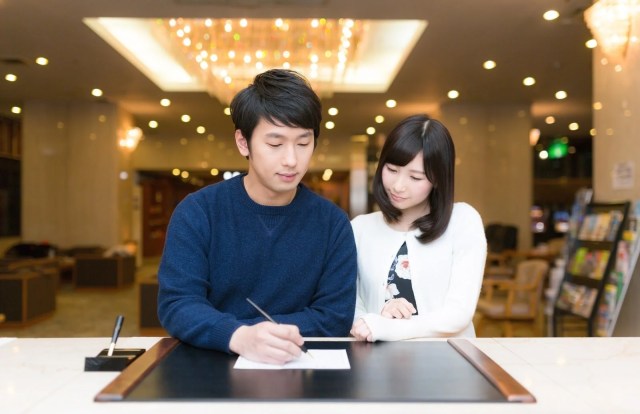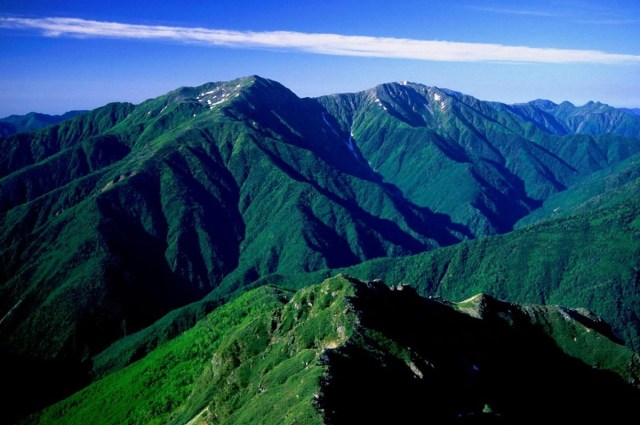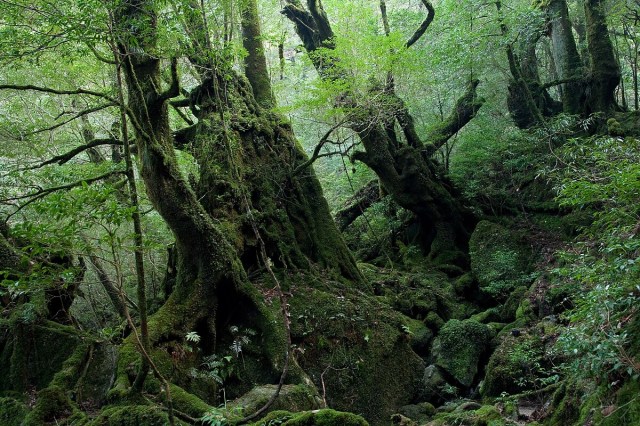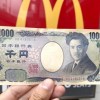
Wants plan completed in time to celebrate 100th anniversary of Japan’s national park system.
The Japanese travel sector is booming, and on Friday Prime Minister Fumio Kishida met with ministry heads to discuss plans to keep that momentum going. One of the ideas they’ve come up with though, is probably going to be divisive, as Kishida has said that the government will be pushing for the development of luxury resort hotels in all 35 of Japan’s national parks.
The plan comes in the wake of statistics showing that in the first half of 2024, Japan has received 17.7 million inbound foreign travelers, more than it has ever had for the period. However, the majority of that inbound tourism is concentrated in Tokyo, Osaka, and Kyoto, and the government wants to start funneling more tourism traffic to other parts of Japan.
In and of itself, attempting to shine a spotlight on more rural areas isn’t a bad idea. In addition to being Japan’s largest and third-largest cities, Tokyo and Osaka are also the major entry points for international flights into Japan. It’s not easy to convince foreign travelers to get off the plane in Tokyo or Osaka, then go to the trouble of hopping on a train and spending the time and money to transfer to a comparatively smaller big city, such as Nagoya or Kobe. If travelers are interested in the big-city experience in Japan, it stands to reason that they’re going to want to experience the biggest one they can. Since it’s going to be almost impossible to directly compete with the metropolitan marvel of Tokyo and Osaka, or the culturally dense temple-and-shrine-studded cityscape of Kyoto, it makes sense to try to promote places in Japan where the appeal is the exact opposite: natural beauty and tranquility.
▼ Minami Alps National Park, which straddles Nagano, Shizuoka, and Yamanashi prefectures
The question, though, becomes why do this by building luxury resorts at national parks? The obvious answer is because the Japanese government thinks foreign tourists can, and will, pay for luxuries while traveling in Japan. The yen is currently at a historic low versus foreign currencies, and that favorable-to-foreigners exchange rate has been translating to big spending, in yen terms, by inbound travelers. Ostensibly Kishida and the cabinet believe that national park scenery and luxury accommodations will be an attractive combination for foreign tourists, who won’t particularly mind, or perhaps even really notice, the high in-yen prices.
▼ Yakushima National Park in Kagoshima Prefecture
It’s worth noting that luxury lodging in rural areas isn’t a completely foreign concept in Japan. With so much of the population living in urban areas, an elegantly relaxing weekend in the countryside, particularly if the hotel has its own hot spring baths, has long been something that appeals to Japanese domestic travelers as well. Compared to, say, national parks in the U.S., national parks in Japan also tend to be more day-tripper-oriented, with many visitors staying in inns or hotels around the park perimeter rather than camping within park grounds.
However, a government-backed push to build new resorts in each and every one of the country’s national parks, specifically in order to capitalize on inbound foreign travelers with fat stacks of yen, may not go over so well at a time when average real wages for Japanese residents has been dropping for the last 26 months in a row, the worst slump in over 30 years. Nevertheless, Kishida says he would like to see the new luxury resorts up and running by 2031, the 100th anniversary of the formation of Japan’s national park system.
Source: Yahoo! Japan News/TV Tokyo Biz, TV Tokyo Biz, Nitele News
Top image: Pakutaso
Insert images: Wikipedia/Alpsdake, Wikipedia/Σ64
● Want to hear about SoraNews24’s latest articles as soon as they’re published? Follow us on Facebook and Twitter!



 Japanese government wants to encourage wealthy foreigners to travel deeper into Japan, NHK says
Japanese government wants to encourage wealthy foreigners to travel deeper into Japan, NHK says Japanese avoiding domestic travel as foreign tourists increase, possibly creating vicious cycle
Japanese avoiding domestic travel as foreign tourists increase, possibly creating vicious cycle Japanese prefectural governor wants foreign tourists to pay special extra fee
Japanese prefectural governor wants foreign tourists to pay special extra fee Foreign tourists in Japan break inbound fall tourism record, are spending their money differently
Foreign tourists in Japan break inbound fall tourism record, are spending their money differently Foreign tourists spending at Japanese department stores dropping rapidly, study says
Foreign tourists spending at Japanese department stores dropping rapidly, study says Visiting Japan’s Gyarados Pokémon park in the city with a special connection to Magikarp【Photos】
Visiting Japan’s Gyarados Pokémon park in the city with a special connection to Magikarp【Photos】 Japanese vending machine serves up unique drinks at four Tokyo train stations
Japanese vending machine serves up unique drinks at four Tokyo train stations Bear meat noodles?!? Tokyo restaurant adds a new kind of niku soba to its menu【Taste test】
Bear meat noodles?!? Tokyo restaurant adds a new kind of niku soba to its menu【Taste test】 Pikachu’s chunky original design is back as a plus-sized plushie【Photos】
Pikachu’s chunky original design is back as a plus-sized plushie【Photos】 Japan super budget dining – What’s the best way to spend 1,000 yen at McDonald’s?
Japan super budget dining – What’s the best way to spend 1,000 yen at McDonald’s? Sapporo Breweries reveals Ginza Brown — the only beer in the world made from honey bee yeast!
Sapporo Breweries reveals Ginza Brown — the only beer in the world made from honey bee yeast! Nearly one in ten young adults living in Japan isn’t ethnically Japanese, statistics show
Nearly one in ten young adults living in Japan isn’t ethnically Japanese, statistics show The Yellow Lucky Bag from Village Vanguard is so bad it may damage Japan-US relations
The Yellow Lucky Bag from Village Vanguard is so bad it may damage Japan-US relations Tokyo event lets you travel back in time, for free, to celebrate 100 years since Showa era start
Tokyo event lets you travel back in time, for free, to celebrate 100 years since Showa era start Which Japanese beef bowl chain’s near-identical demon grater onioroshi ponzu gyudon is the best?
Which Japanese beef bowl chain’s near-identical demon grater onioroshi ponzu gyudon is the best? Starbucks Japan releases new drinkware and goods for Valentine’s Day
Starbucks Japan releases new drinkware and goods for Valentine’s Day Starbucks Japan releases new Frappuccino and latte for Valentine’s Day
Starbucks Japan releases new Frappuccino and latte for Valentine’s Day Massive manga collaboration bringing 100 years of Shueisha manga to Uniqlo T-shirts【Photos】
Massive manga collaboration bringing 100 years of Shueisha manga to Uniqlo T-shirts【Photos】 Majority of Japanese women in survey regret marrying their husband, but that’s only half the story
Majority of Japanese women in survey regret marrying their husband, but that’s only half the story Totoro cream puffs and Catbus cookies are finally available in downtown Tokyo
Totoro cream puffs and Catbus cookies are finally available in downtown Tokyo Japan’s kid-friendly ski program is now selling Pikachu snowboards for a limited time only
Japan’s kid-friendly ski program is now selling Pikachu snowboards for a limited time only Japanese women showing rebounding interest in giving Valentine’s Day chocolate【Survey】
Japanese women showing rebounding interest in giving Valentine’s Day chocolate【Survey】 McDonald’s Japan releases a Mushroom Mountain and Bamboo Shoot Village McFlurry
McDonald’s Japan releases a Mushroom Mountain and Bamboo Shoot Village McFlurry Ramen restaurant’s English menu prices are nearly double its Japanese ones, denies discriminating
Ramen restaurant’s English menu prices are nearly double its Japanese ones, denies discriminating 10 times to avoid traveling in Japan in 2026
10 times to avoid traveling in Japan in 2026 Starbucks Japan ready to get Year of the Horse started with adorable drinkware and plushies【Pics】
Starbucks Japan ready to get Year of the Horse started with adorable drinkware and plushies【Pics】 Our 52-year-old pole dancing reporter shares his tips for achieving your New Year’s exercise goal
Our 52-year-old pole dancing reporter shares his tips for achieving your New Year’s exercise goal 7-Eleven Japan starts new temporary luggage storage service in over 300 branches
7-Eleven Japan starts new temporary luggage storage service in over 300 branches Disillusionment at Tsukiji’s tourist-target prices led us to a great ramen restaurant in Tokyo
Disillusionment at Tsukiji’s tourist-target prices led us to a great ramen restaurant in Tokyo Japan may add Japanese language proficiency, lifestyle classes to permanent foreign resident requirements
Japan may add Japanese language proficiency, lifestyle classes to permanent foreign resident requirements Lacquerware supplier to emperor of Japan and Pokémon team up for new tableware
Lacquerware supplier to emperor of Japan and Pokémon team up for new tableware Survey asks foreign tourists what bothered them in Japan, more than half gave same answer
Survey asks foreign tourists what bothered them in Japan, more than half gave same answer Japan’s human washing machines will go on sale to general public, demos to be held in Tokyo
Japan’s human washing machines will go on sale to general public, demos to be held in Tokyo We deeply regret going into this tunnel on our walk in the mountains of Japan
We deeply regret going into this tunnel on our walk in the mountains of Japan Studio Ghibli releases Kodama forest spirits from Princess Mononoke to light up your home
Studio Ghibli releases Kodama forest spirits from Princess Mononoke to light up your home Major Japanese hotel chain says reservations via overseas booking sites may not be valid
Major Japanese hotel chain says reservations via overseas booking sites may not be valid Put sesame oil in your coffee? Japanese maker says it’s the best way to start your day【Taste test】
Put sesame oil in your coffee? Japanese maker says it’s the best way to start your day【Taste test】 No more using real katana for tourism activities, Japan’s National Police Agency says
No more using real katana for tourism activities, Japan’s National Police Agency says Starbucks Japan reveals new sakura drinkware collection, inspired by evening cherry blossoms
Starbucks Japan reveals new sakura drinkware collection, inspired by evening cherry blossoms Updated cherry blossom forecast shows extra-long sakura season for Japan this year
Updated cherry blossom forecast shows extra-long sakura season for Japan this year Fewer Japanese people traveling domestically, government blames birth rate, others blame foreign crowds, costs
Fewer Japanese people traveling domestically, government blames birth rate, others blame foreign crowds, costs The top 10 things foreign tourists visiting Japan want to do during Golden Week
The top 10 things foreign tourists visiting Japan want to do during Golden Week Japanese government wants to remove tax-exemption limit for foreign tourists on consumables
Japanese government wants to remove tax-exemption limit for foreign tourists on consumables International tourists travel to Japan, spend big at top tourist spots in Tokyo
International tourists travel to Japan, spend big at top tourist spots in Tokyo More foreign tourists than ever before in history visited Japan last month
More foreign tourists than ever before in history visited Japan last month Foreign tourists outnumber Japanese ones at Kyoto hotels for first time ever
Foreign tourists outnumber Japanese ones at Kyoto hotels for first time ever Brand-new theme park in Japan charges foreign tourists 25 percent more than locals for tickets
Brand-new theme park in Japan charges foreign tourists 25 percent more than locals for tickets New Tokyo restaurant charges higher prices to foreign tourists than Japanese locals
New Tokyo restaurant charges higher prices to foreign tourists than Japanese locals Kyoto experiencing problems with foreign tourists not paying for bus fares, but not on purpose
Kyoto experiencing problems with foreign tourists not paying for bus fares, but not on purpose Tokyo’s famous Lost in Translation hotel is closed
Tokyo’s famous Lost in Translation hotel is closed Taipei introduces taxi tours and 24-hour toll-free interpretation services for foreign tourists
Taipei introduces taxi tours and 24-hour toll-free interpretation services for foreign tourists Japan set to introduce new entry system for foreign tourists
Japan set to introduce new entry system for foreign tourists Japanese government freezes inbound air reservations for foreign residents and Japanese citizens
Japanese government freezes inbound air reservations for foreign residents and Japanese citizens Foreign tourists react to mask-wearing in Japan, and Japanese people react to foreign non-maskers
Foreign tourists react to mask-wearing in Japan, and Japanese people react to foreign non-maskers Japan removes tour guide requirement for foreign tourists
Japan removes tour guide requirement for foreign tourists “Foreign travelers are Japan’s guests” – Governor against charging tourists more than locals
“Foreign travelers are Japan’s guests” – Governor against charging tourists more than locals
Leave a Reply